
A Rare and Beautiful Oddity
Kyanite clay, porcelain (eyes), gouache, chalk pastel, charcoal, graphite, acrylic gloss medium
30" x 8" x 9"
Fall 2016
This young female is a prideful spectacle, graceful yet grotesque as a composite of two anatomies that are substantially far apart on the pathway of evolution. Somehow this snowy and gold speckled bird, weighing less than two pounds of feather, resembles the plump female form I am familiar with as my own. She willingly displays herself as a rare and beautiful oddity, her sexual maturity contradicted with the youthful softness of her flesh and feathers.

A Rare and Beautiful Oddity
details
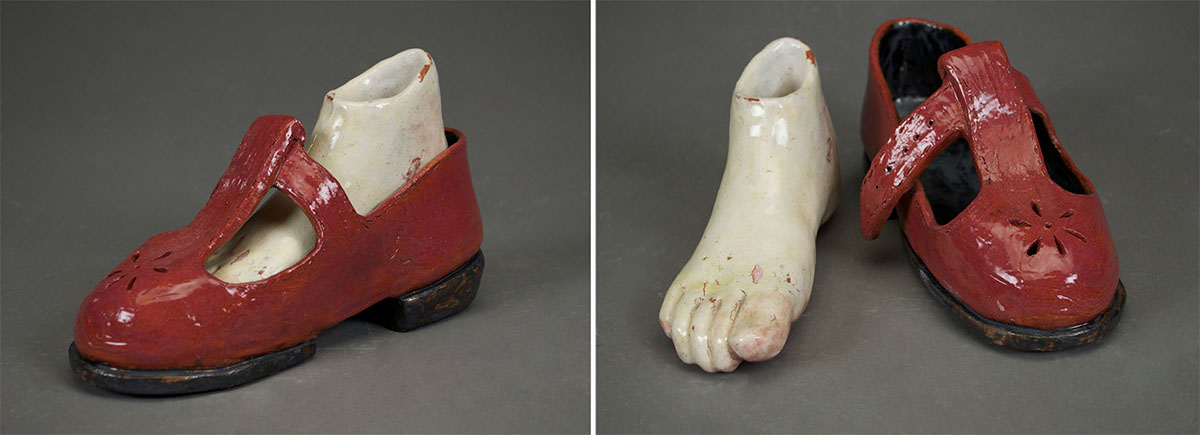
Big Girl Shoe
Red earthenware clay, iron oxides, engobe, mason stain wash, glaze
9.75" x 4.25" x 5.5"
Spring 2016

Reliquario di Santa Serafina
Kyanite clay, porcelain (eyes), gouache, chalk pastel, acrylic gloss medium, found fabric, the artist's hair
Life size
Fall 2016
Serafina is the name of my great grandmother, and Italian immigrant. It is also my Confirmation name.
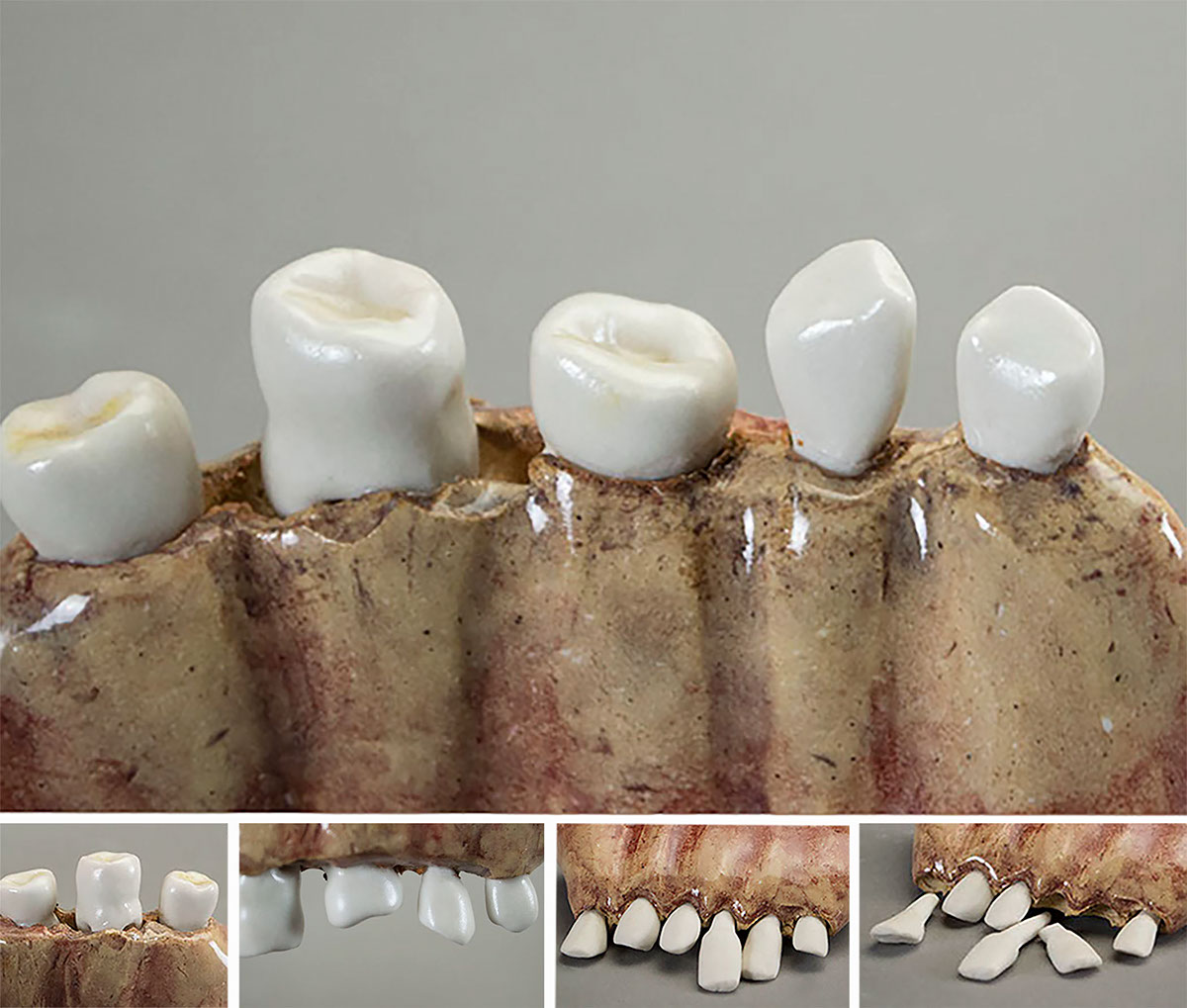
Reoccurring Nightmare
Detail images of two rows of teeth
Porcelain, orange stoneware, mason stain washes, glaze
Size of human teeth
Fall 2016
Some teeth are removable. Others wiggle in their sockets.

Circus Cups
Functional ware made from the composite memory of some of my favorite books
Orange stoneware clay, white slip, wood fired
Various sizes
Fall 2016
"God, how we get our hands in each other's clay. That's friendship, each playing the potter to see what shapes we can make of the other."
-Ray Bradbury, Something Wicked This Way Comes
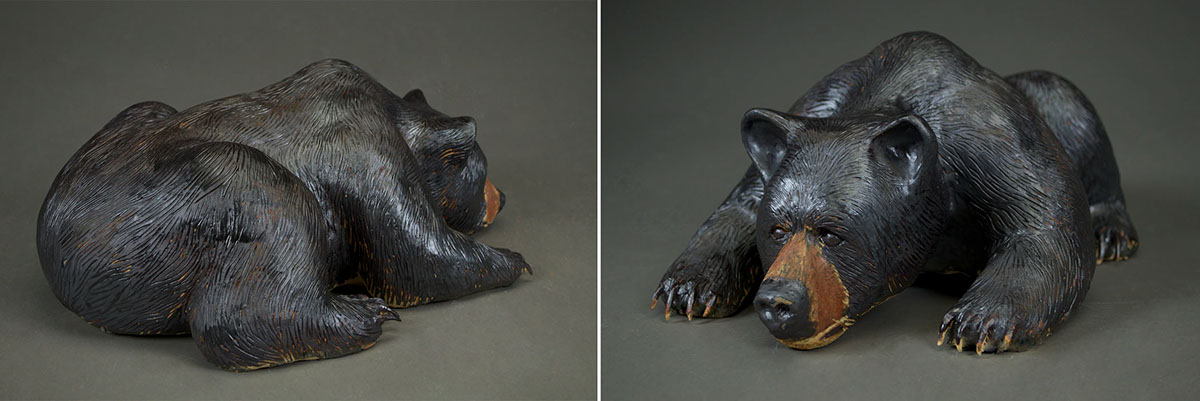
Preparing for Winter: The Lethargic Period Between Hyperphagia and Hibernation
Stoneware, black slip with sgraffito technique, glaze
15.5" x 10.5" x 6.25"
Spring 2016
A self portrait
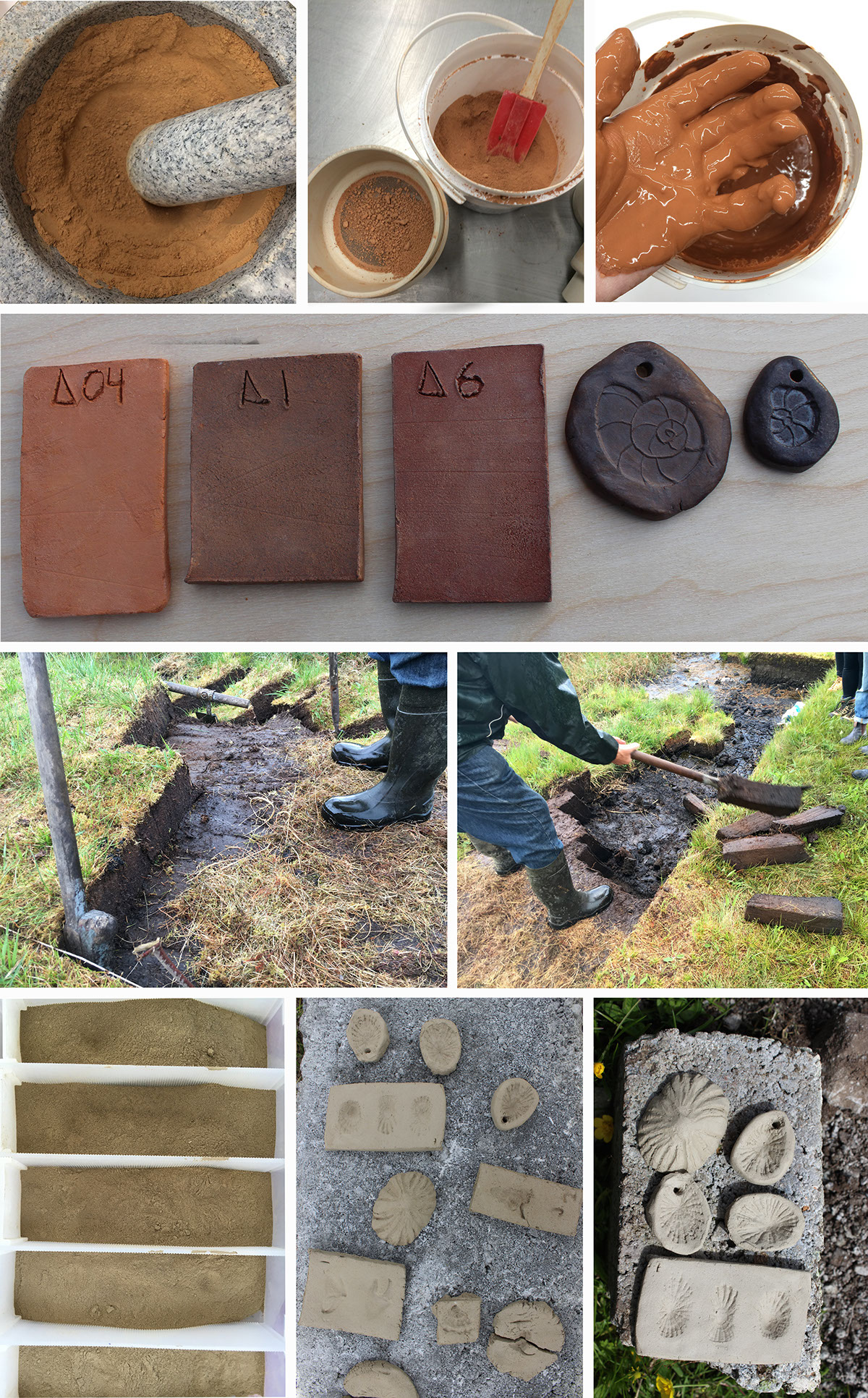
Geological Studies: Clay Finding and Reenactment of the Fossilization Process
Upper Images (orange): Baltimore, Maryland, Spring 2016
Lower Images (grey/green): Co. Clare, Ireland, Summer 2016
These images are from an ongoing, long term clay finding exploration. Up until now, the two locations from which I have harvested clay are Real Food Farm in Baltimore, Maryland and a generations old peat bog in Co. Clare, Ireland. Both of these places are used to harvest forms of necessary energy for human consumption, either in the form of food, or of fuel to provide heat. Therefore, interaction with these locations is a way of studying local ecologies within the Anthropocene. Using land to grow food, harvesting ancient fossil fuels, and finding a material to create eating and drinking vessels are ways in which humans utilize and change their local landscape.
Top row: processing clay
Second row: test tiles fired at Cone 04, Cone 1, Cone 6, Cone 10 reduction, and Cone 10 wood fire. Last two images stamped with hand cut stamp, original design
Third row: Irish peat bog farmer cutting peat in the bog where clay was found
Fourth row: ground and sifted clay, "fossil" tests pre-firing
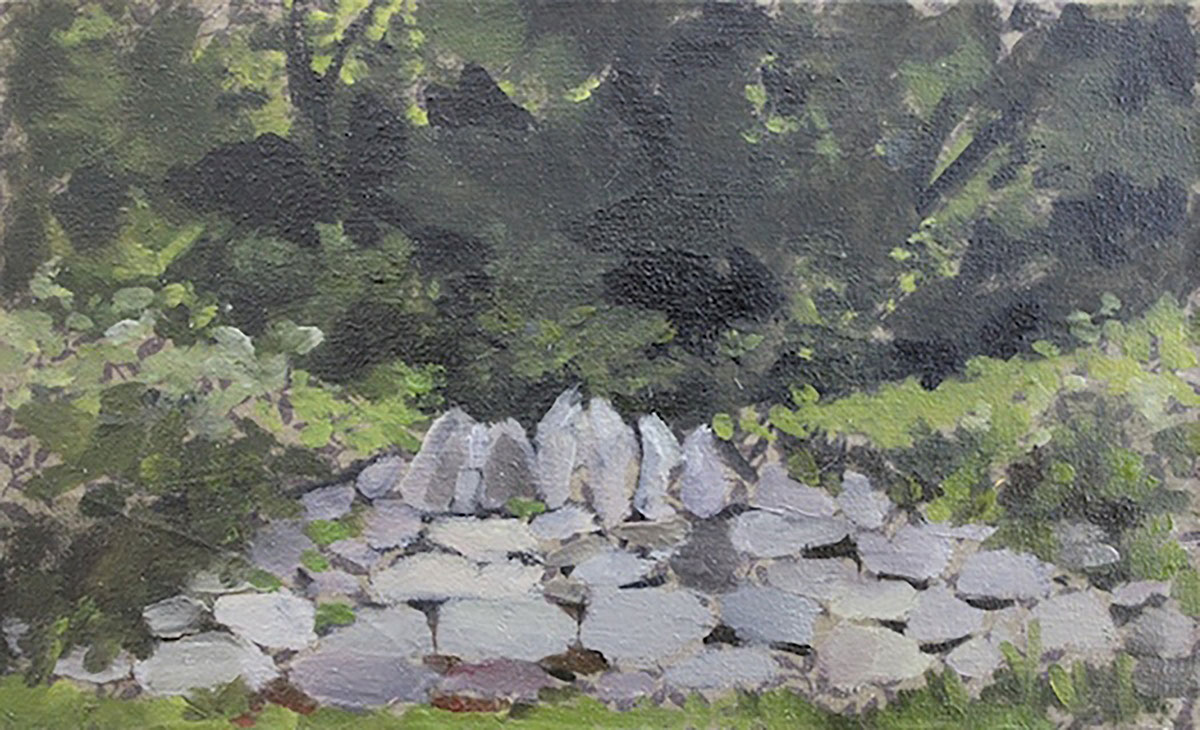
Limestone Wall
(Precursor to "Kiln")
Plein air painting in Co. Clare, Ireland
Oil on handmade panel
5" x 7"
Summer 2016
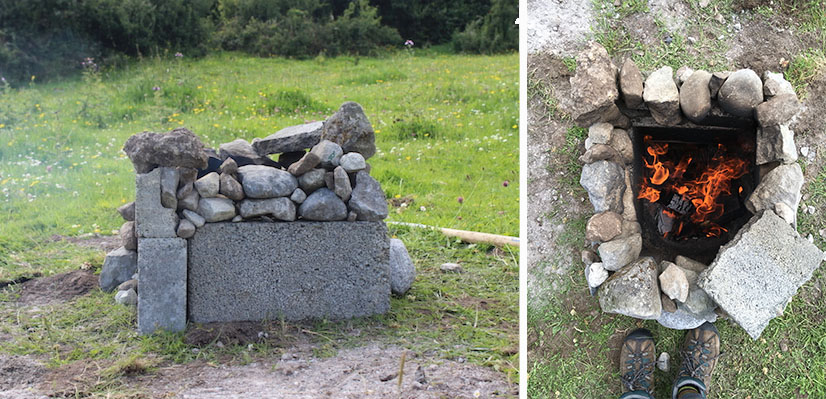
Kiln
Pit firing of found clay in Co. Clare, Ireland
Duration of firing: 9 hours
Limestone, found cinderblocks, scrap wood, local peat, seaweed, coffee grounds, cow pies
Boots for scale - the hole is as deep as the walls are high
Summer 2016

